The Big Island of Hawaii, a land sculpted by volcanic forces, presents a rare and mesmerizing phenomenon: black sand beaches. These unique landscapes, born from the fiery heart of volcanoes, offer more than just picturesque views; they are a testament to the island’s dynamic geological history. This post delves into the captivating world of the Big Island’s black sand beaches, exploring not only their stunning beauty but also their intriguing formation. From the famous Punaluu to the hidden gems like Kaimu, each beach tells a story of nature’s power and artistry.
The Formation Of Black Sand Beaches
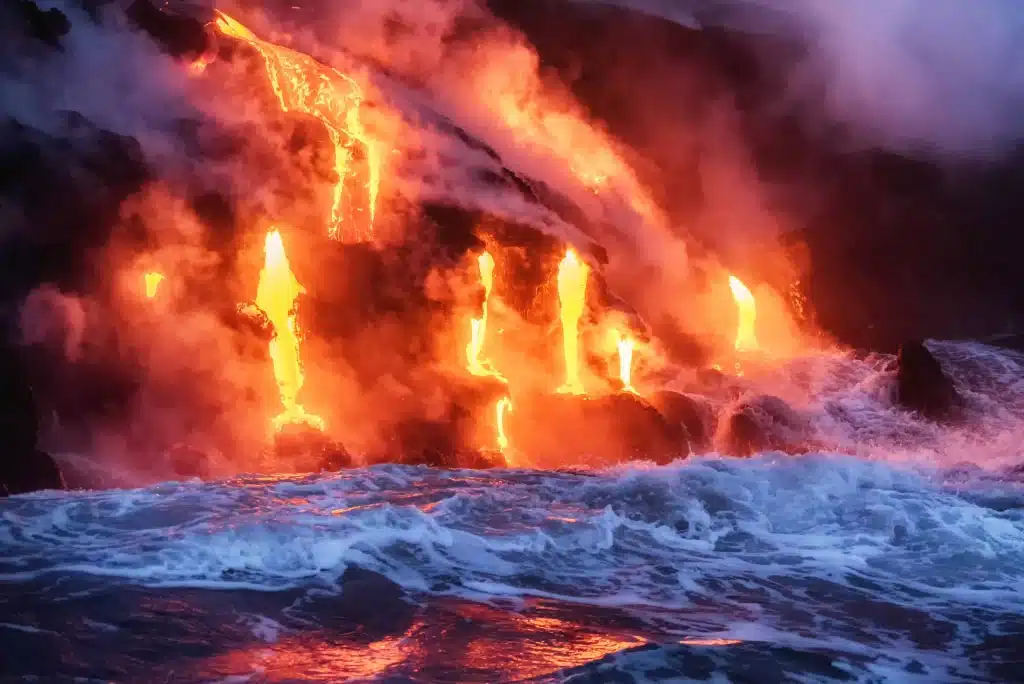
Black sand beaches are a marvel of nature, primarily formed through the interaction between volcanic activity and oceanic forces. When hot lava enters the ocean, it cools rapidly, shattering into sand and tiny fragments of basalt. This process, known as quench fragmentation, is responsible for the creation of the black sand that adorns these beaches. Over time, waves and currents further break down these fragments, smoothing them into the fine, dark sand that visitors marvel at today.
The Big Island, with its active volcanoes like Kilauea and Mauna Loa, serves as an ideal location for this natural phenomenon. The continuous volcanic activity over centuries has contributed significantly to the formation of numerous black sand beaches along its coastline. Each eruption and subsequent flow of lava into the ocean adds a new layer to these unique landscapes, continuously reshaping and redefining their contours and compositions. Now, let’s explore a few of the destinations where you can witness this breathtaking process in action.
Punaluu Beach
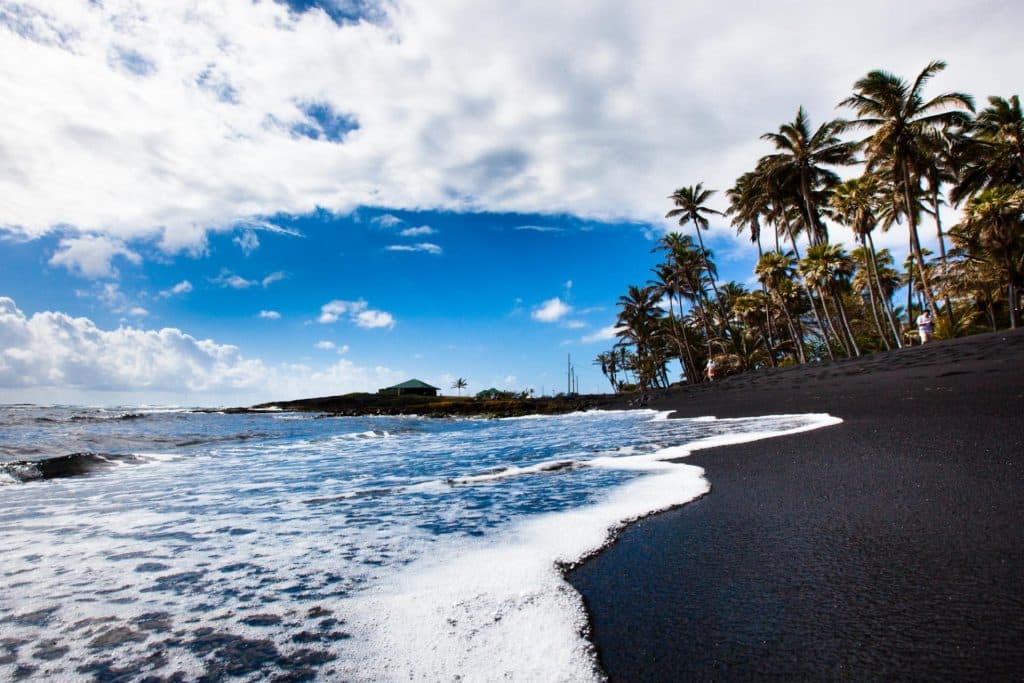
Punaluu Beach, nestled between Pahala and Na’alehu, is perhaps the most famous black sand beach on the Big Island. Its sand, a deep, rich black, creates a striking contrast against the blue waters and green palms. Formed from the lava of the mighty Kilauea Volcano, Punaluu is not just a beach but a living, geological exhibit showcasing the transformative power of volcanic activity.
Beyond its geological significance, Punaluu is also a haven for wildlife, most notably for the endangered Hawaiian green sea turtles and hawksbill turtles. These majestic creatures often bask on the beach’s warm sands, offering a rare opportunity for visitors to observe them in their natural habitat. However, it’s crucial to respect these endangered species by maintaining a safe distance, as human interaction can be harmful to their health and well-being.
Pohoiki Beach
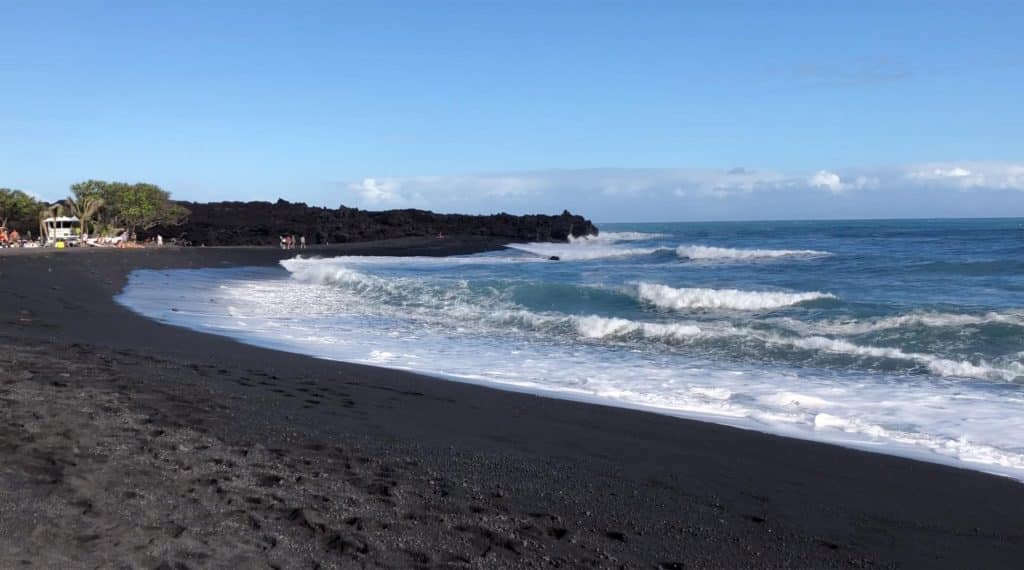
Pohoiki Beach, part of the Isaac Kepo’okalani Hale Beach Park in the Puna district, is another stunning example of the Big Island’s black sand beaches. Its creation is a recent phenomenon, a direct result of the 2018 Kilauea eruption. The lava flows from this eruption entered the ocean, cooling rapidly and fragmenting into the black sand that now defines Pohoiki’s shoreline.
This beach, however, is more than just its sand; it’s a symbol of resilience and transformation. Prior to the 2018 eruption, Pohoiki was not known for black sand. The volcanic activity dramatically altered the landscape, showcasing how nature can swiftly change the face of the earth. While swimming at Pohoiki can be risky due to strong currents, the beach’s raw beauty and testament to nature’s power make it a must-visit destination.
Kaimu Beach
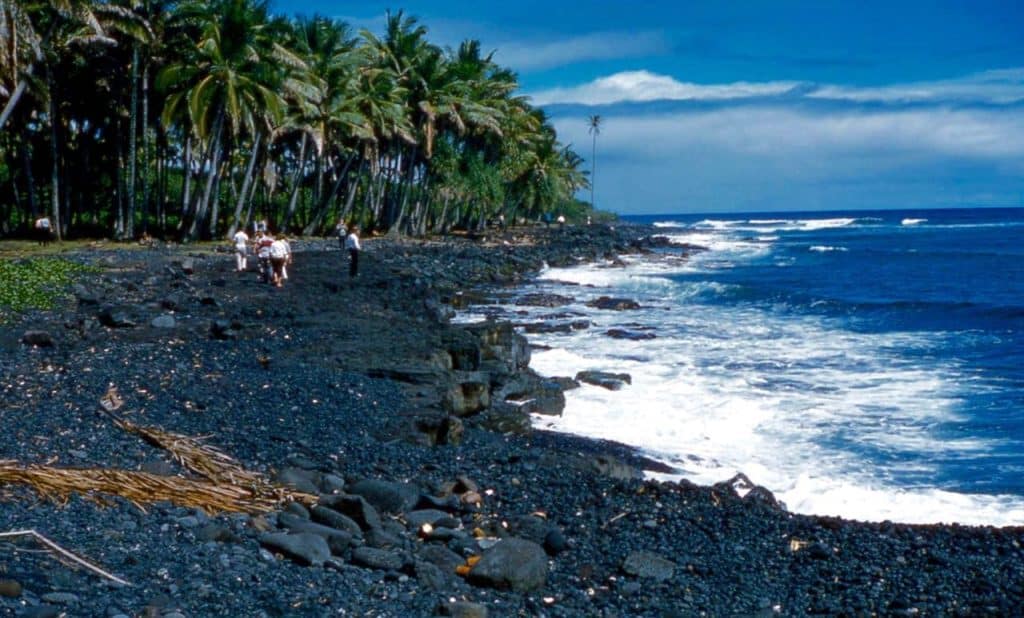
Kaimu Beach, located in the lush Puna district, offers a poignant glimpse into the ever-changing nature of Hawaii’s landscapes. Before the 1990 Kilauea eruption, Kaimu was renowned for its idyllic beauty, with sparkling sands and swaying palms. However, the eruption dramatically reshaped this paradise, burying the original beach under about 70 feet of lava. Today, a new black sand beach has formed in its place, symbolizing nature’s relentless cycle of destruction and creation.
Visiting Kaimu Beach now is a unique experience. The landscape is stark yet beautiful, dominated by the rugged lava fields and the emerging black sand shoreline. The beach is accessible via a short hike from the parking area at Kaimu Kalapana Beach Park, offering visitors a firsthand look at the young, evolving coastline. While swimming is not advised due to the strong currents, Kaimu is an excellent spot for sightseeing, reflecting on the power of nature, and witnessing the rebirth of a beach.
Polulu Valley Beach
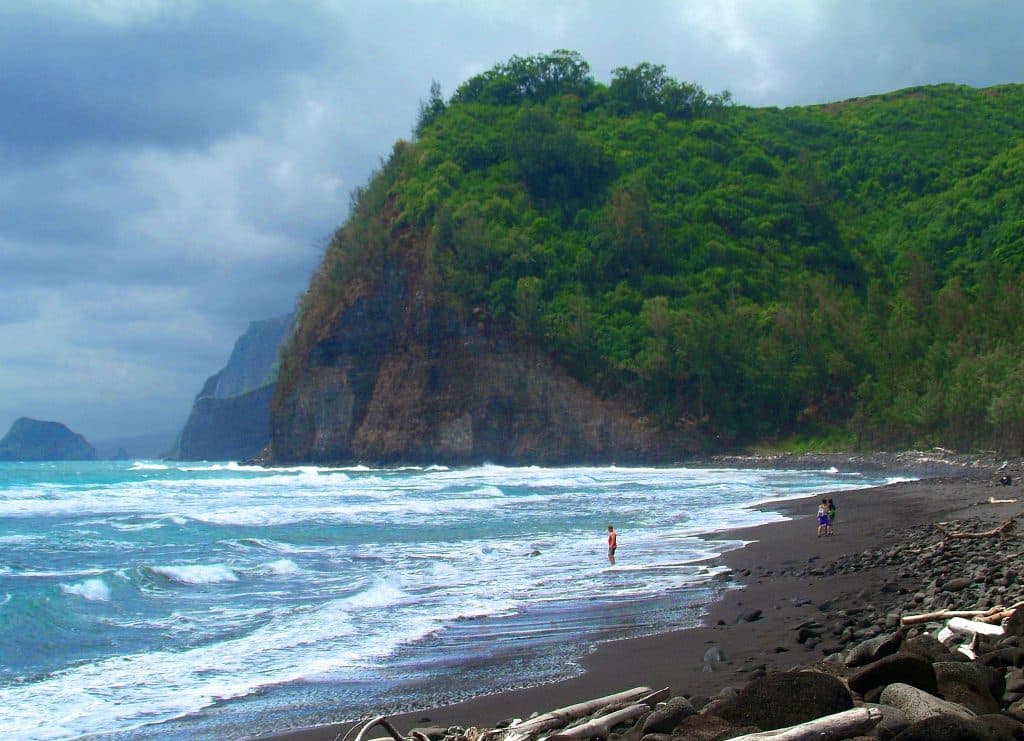
Polulu Valley Beach, carved out by the ancient Kohala volcano, stands as a testament to Hawaii’s geological past. The beach is located at the head of the scenic Polulu Valley, where the remnants of the volcano meet the sea, creating a stunning black sand beach. This beach is unique for its emerald-green ground cover, which beautifully contrasts with the dark sand and the blue ocean, painting a picture of Hawaii’s diverse natural palette.
Accessing Polulu Valley Beach is an adventure in itself. A hike down a steep, winding trail leads visitors from the lookout point at the end of Highway 270 to the valley floor. This hike, though short, can be challenging, especially during the rainy season when the path becomes slippery. However, the effort is rewarded with breathtaking views and a serene beach setting. Swimming here is not recommended due to strong undertows and high tides, but the beach is a perfect spot for photography, picnicking, and simply soaking in the awe-inspiring surroundings.
Cultural Significance Of These Beaches
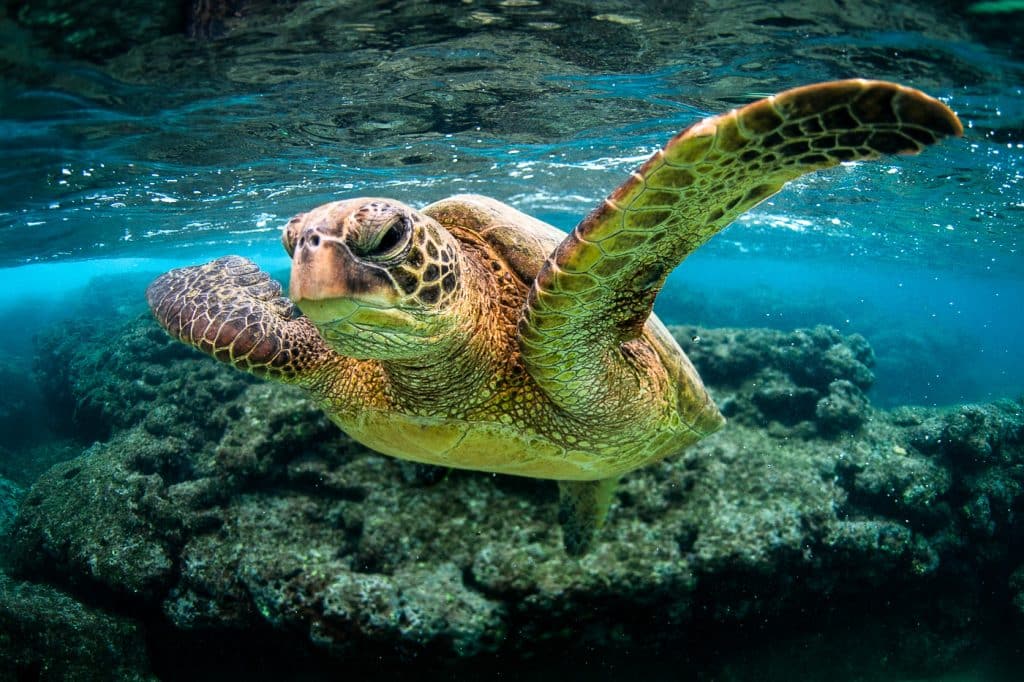
The black sand beaches of the Big Island are not only natural wonders but also hold significant environmental and cultural importance. Ecologically, these beaches provide critical habitats for various marine species, including the endangered Hawaiian green sea turtle. The unique sand composition, a result of volcanic activity, supports a distinct ecosystem, different from that of typical white sand beaches. These beaches are vital for biodiversity and environmental health, serving as a natural laboratory for studying volcanic processes and ecological adaptation.
Culturally, these beaches are deeply ingrained in Hawaiian traditions and lore. They are considered sacred in many Hawaiian stories and legends, often associated with Pele, the Hawaiian goddess of volcanoes and fire. For the local community, these beaches are more than just tourist attractions; they represent a connection to their ancestral past and a respect for the natural forces that shape their land. As such, it’s crucial for visitors to approach these sites with respect and mindfulness, honoring the cultural significance and natural sanctity of these unique landscapes.
Discover The Wonders Of The Big Island’s Black Sand Beaches
In the heart of the Pacific, the Big Island’s black sand beaches stand as a testament to nature’s artistry and power. Each beach, with its unique charm and story, beckons for exploration and respect. As you plan your journey, remember these shores are more than scenic spots; they are delicate ecosystems and cultural treasures. Embrace the spirit of adventure and conservation, and let these extraordinary landscapes inspire a deeper connection with the natural world.
